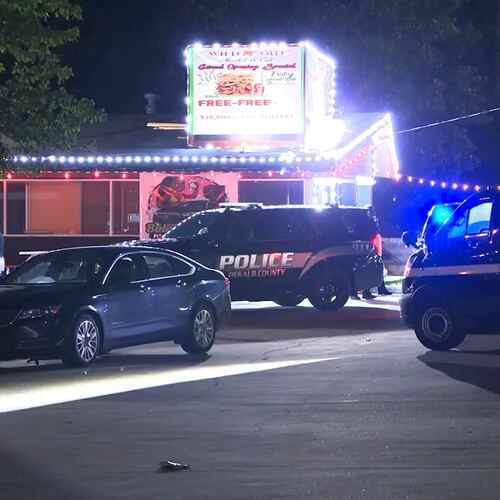Morris Brown College officials have filed for Chapter 11 bankruptcy in a last ditch effort to prevent the 131-year-old school from being foreclosed on and sold at auction, and to give them time to regroup.
Morris Brown, which is more than $30 million in debt, was facing foreclosure next month after investors called $13 million worth of bonds tied to the college. The bonds were issued by the Fulton County Development Authority in 1996. As security for the bonds, Morris Brown pledged several pieces of property, including the school's administration building. An auction of assets had been scheduled for Sept. 4.
"The trustees are taking several deliberate actions to insure that we not only survive, but thrive," board Chairman Preston W. Williams said Saturday. "Our commitment is to focus on restructuring and making it possible for us to survive another day."
Chapter 11 is part of the U.S. Bankruptcy Code, which permits reorganization and gives federal protection to businesses unable to pay their debts.
Renardo Hicks, an attorney for Morris Brown, said the emergency filing automatically delays the foreclosure until a judge decides otherwise.
"Our expectation is that the sheriff's sale will not happen," Hicks said.
Morris Brown President Stanley Pritchett said the filing will give the school breathing room to find a steady stream of capital to keep it afloat.
"We are making a statement that Morris Brown College is not going anywhere," Pritchett said. "We are not going to allow this latest challenge to get in the way of what we are trying to do."
Hundreds of supporters and alumni of the school gathered on campus Saturday for a prayer vigil and campus prayer tour.
At times, the vigil, which started in the John H. Lewis Gymnasium, was more like church. The air conditioning wasn't on so large fans were placed at the doors to circulate the air. Everyone used their programs to fan them selves as members of the Morris Brown Choir sang hymns.
Beneath banners touting the school's athletic dominance of the 1940s and 1950s — including one that read "Black College National Champions 1951" — several ministers offered prayers and hymns.
Then they walked across campus, stopping at each major facility to pray — from the multi-million-dollar football stadium that Olympic money built, which now sits choked with weeds, to Fountain Hall, the historic building where W.E.B. Du Bois once had an office, now boarded up and abandoned.
Eugenia McDowell stood at the top of the steps overlooking the football field, waiting for a group to gather for prayer. To her right was Furber Cottage, now boarded up. To her left was Gaines Hall, which was the honors dorm when she was a student there in 1997 — also boarded up.
Directly behind her was the Sarah Allen Quads, gutted by a recent fire.
"It is sad that we might lose all of this," McDowell said. "I would love to come back to this campus one day and see it revitalized. That is why we are praying today."
About the Author
The Latest
Featured


